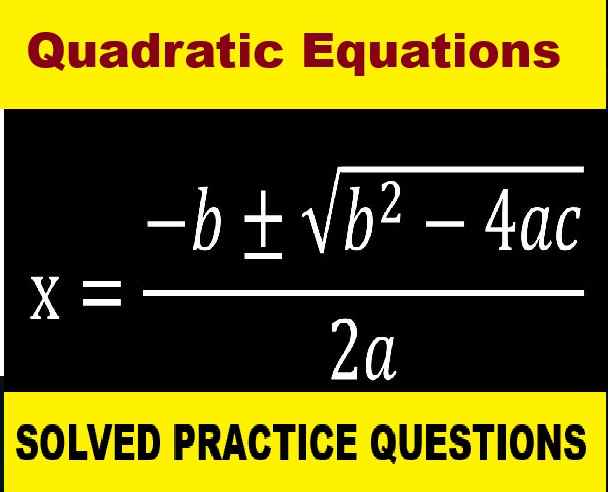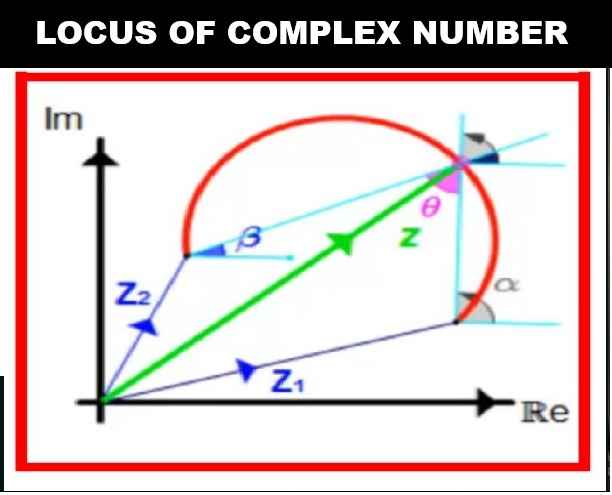Photosynthesis Class-10 Goyal Brothers ICSE Biology Solutions Ch-6 . We Provide Solutions of Test yourself , MCQs, Very Short Answer , Short Answer of Exercise-6 Photosynthesis. All solutions are given as council prescribe guideline for next upcoming exam. Visit official Website CISCE for detail information about ICSE Board Class-10 Biology.
Ch-6 Photosynthesis Goyal Brothers Prakashan ICSE Class-10 Biology Solutions
| Board | ICSE |
| Publications | Goyal Brothers publications |
| Subject | Biology |
| Class | 10th |
| Writer | Dr. K.K. Aggrawal |
| Chapter-6 | Photosynthesis |
| Topics | Solutions of MCQ, Very short and Short Answer Questions |
| Edition | for 2022-2023 Academic Session |
Note :- Before Viewing Goyal Brothers Solutions of Chapter-6 Photosynthesis. Read the whole chapter carefully with figure.
Test Yourself-1
Ch-6 Photosynthesis Goyal Brothers Prakashan ICSE Class-10 Biology Solutions
(Page-78)
1. Fill in the blanks
(i) The opening of the stomata usualy depends upon the ………………. of the guard cell.
(ii) During photosynthesis, light energy is trapped by ………….. .
(iii) Light energy is used in splittingg the ………………. molecule, into …………….. .
(iv) Reduction of NADP takes place in ………………. reaction.
2. Which type of changes take place in dark reaction ?
3. What is the first stable produce of Calvin cycle ?
4. What does photophosphorylation means ?
Answer :
1.
(i) turgor pressure,
(ii) thylakoid
(iii) H2O , hydrogen ions, electrons, and oxygen atoms
2. In the dark reaction, ATP and NADPH molecules (produced during light reaction) are used to produce glucose (C6H12O6) from carbon dioxide. Fixation and reduction of carbon dioxide occurs in the stroma of the chloroplast through a series of reactions.
3. 3-PGA (3-phosphoglyceric acid)
4. the synthesis of ATP from ADP and phosphate that occurs in a plant using radiant energy absorbed during photosynthesis
Test Yourself-2
Ch-6 Photosynthesis Goyal Brothers Prakashan ICSE Class-10 Biology Solutions
(Page-84)
A. How do the following affect photosynthesis ?
1. Chloroplast
2. Numerous stomata
3. Leaf arrangement
Answer :
1. Chloroplasts perform photosynthesis during the daylight hours. The immediate products of photosynthesis, NADPH and ATP, are used by the photosynthetic cells to produce many organic molecules.
2. Stomata control the water loss for transpiration and the CO2 uptake for photosynthesis. However, the relationships between photosynthesis and stomatal traits across a wide range of species are largely been unknow
3. larger the leaf size, higher is the rate of photosynthesis. A leaf is the most essential part of a plant, which is mainly involved in the photosynthesis and transpiration process. The size and shape of the leaf vary with the plants and their size affect the rate of photosynthesis.
B. The end products of photosynthesis are ……. glucose and oxygen., and …..water………….. .
Answer :
C. Fill in the blanks :
1. The chemical used to remove CO2 from the flask is …..Potassium hydroxide…………
2. CO2 enters into the stomata from atmosphere by .diffusion……………….
3. Light reaction takes place in …….thylakoid discs………. of chloroplast.
A. MULTIPLE CHOICE TYPE
Ch-6 Photosynthesis Goyal Brothers Prakashan ICSE Class-10 Biology Solutions
(Page-85)
Choose the most Appropriate Answer
1. A plant is kept in a dark cupboard for about 48 hours before conducting any experiment on photosynthesis to
(a) Remove starch from the plant.
(b) Ensure that starch is not translocated from the leaves.
(c) Remove chlorophyll from the leaf of the plant.
(d) Remove starch from the experimental leaf
Answer : Remove starch from the experimental leaf
2. The individual flattened stacks of membranous structures inside the chloroplasts are known as
(a) Grana
(b) Stroma
(c) Thylakoids
(d) Cristae
Answer : (a) Grana
3. The assimilatory powers for dark reaction are
(a) ATP and O2
(b) ATP and NADPH2
(c) O2 and CO2
(d) ATP and H2O
Answer : (b) ATP and NADPH2
4. A destarched plant is one whose
(a) leaves are free from chlorophyll
(b) aerial parts are free from starch
(c) leaves are free from starch
(d) plant is free from starch
Answer : (a) leaves are free from chlorophyll
5. Which of the following does not affect the rate of photosynthesis?
(a) Temperature
(b) Light intensity
(c) Humidity
(d) CO2 concentration
Answer : (c) Humidity
6. The specific function of light energy in photosynthesis is to
(a) activate chlorophyll
(b) split water molecule
(c) synthesise starch
(d) destroy carbon dioxide
Answer : (a) activate chlorophyll
B. VERY SHORT ANSWER QUESTIONS
Ch-6 Photosynthesis Goyal Brothers Prakashan ICSE Class-10 Biology Solutions
(Page-85)
Question 1. Name the following:
(i) The first form of food produced during photosynthesis.
(ii) The chemical that absorbs carbon dioxide during dark reaction .
(iii) The biological process which is the starting point of the food chain.
(iv) That part of chloroplast where the light reaction of photosynthesis takes place.
(v) The ground substance present in a chloroplast.
(vi) The process of conversion of ADP to ATP during the first phase of photosynthesis.
(vii) The process of conversion of several molecules of glucose to one molecule of starch.
(viii) An aquatic plant used in the lab to demonstrate O2 liberation during photosynthesis.
(ix) The compartment which stores energy in the cells.
(x) The organisms that are called natural purifers of the air.
Answer :
(i) Glucose is the first form of food substance produced during photosynthesis.
(iii) Photosynthesis is only the beginning of the food chain. There are many types of animals that will eat the products of the photosynthesis process
(iv) The chloroplast is involved in both stages of photosynthesis. The light reaction takes place in the thylakoid discs
(v) Stroma
(vi) Photophosphorylation is the process of synthesizing energy-rich ATP molecules by transferring the phosphate group to ADP molecule in the presence of light to convert ADP to ATP molecules
(vii) Process of conversion of ‘several molecules’ of glucose to ‘one molecule of starch’ is called as polymerisation
(viii) Hydrilla plant mostly used in the practical work to prove that oxygen is formed during photoshythesis because Hydrilla is a submerged aquatic plant and it have not stomata to take carbon dioxide and release oxygen that is why it respires through their whole body surface and release oxygen through this so we can easily
(ix) ATP (Adenosine triphosphate) stores energy in the cells
(x) The organisms that can be called “natural purifiers” of the air. Green plants are called natural purifiers of the air.
Question 2. Complete the following by filling in the blanks numbered 1 to 10 with the appropriate word/term:
Photosynthesis involves light reaction and dark reaction. During light reaction, the chlorophyll present in the (1) …………. gets activated by absorbing light energy. This energy splits (2) ……………… molecules to (3) ……………… and oxygen and releases two electrons. This process is called (4) …………….. . The (5) ……………… ions are picked up by NADP to form (6) ……………. . The ADP is converted to (7) …………….. . This process is called (8) ……………… . During the dark phase, the compound produced at the end of light reaction reacts with carbon dioxide to from (9) ………………. . This product is converted to starch. The process is called (10) …………… .
Answer :
Photosynthesis involves light reaction and dark reaction. During light reaction, the chlorophyll present in the leaves gets activated by absorbing light energy. This energy splits water molecules to hydrogen ion and oxygen and releases two electrons. This process is called photolysis. The hydrogen ions are picked up by NADP to form NADPH2. The ADP is converted to ATP. This process is called photophosphorylation. During the dark phase, the compound produced at the end of the light reaction reacts with carbon dioxide to form glucose. This product is converted to starch. The process is called polymerization.
Question 3. Mention if the following statements are true or false. If false, rewrite the sentences by changing only the words printed in bold face:
(i) Photosynthesis occurs in all cells of the plant
(ii) Potassium hydroxide absorbs oxygen.
(iii) By-product of photosynthesis is CO2.
(vi The dark reaction of photosynthesis is light independent.
(v) Plants that manufacture their own food are termed as heterotrophs.
(vi) Photosynthesis occurs only in cells containing chloroplasts.
Answer :
(i) False, Photosynthesis occurs in all green part of the plant
(ii) False, Potassium hydroxide absorbs CO2.
(iii) False, By-product of photosynthesis is O2.
(iv) True
(v) False, Plants that manufacture their own food are termed as Autotrophs.
(vi) True
Question 4. Given below is a set of five terms. Rewrite the terms in the correct order so as to be in logical sequence as per the directions given in brackets:
(i) Water molecules, oxygen, grana, hydrogen and hydroxyl ions, photons. (photosynthesis)
(ii) Destarched plant, iodine added, washed in water, a leaf boiled in alcohol, placed in sunlight. (testing for presence of starch)
Answer :
(i) photons, grana, water molecules, hydrogen and hydroxyl ions, oxygen.
(ii) Destarched Plant, Placed in sunlight, A leaf boiled in alcohol, washed in water, Iodine added
C. SHORT ANSWER QUESTIONS
Ch-6 Photosynthesis Goyal Brothers Prakashan ICSE Class-10 Biology Solutions
(Page-86)
Question 1. Define:
(i) Photosynthesis
(ii) Chloroplast
(iii) Compensation point
(iv) Photolysis
(v) Destarched plant
(vi) Photophosphorylation
Answer :
(i) the process by which green plants and some other organisms use sunlight to synthesize nutrients from carbon dioxide and water. Photosynthesis in plants generally involves the green pigment chlorophyll and generates oxygen as a by-product.
(ii) a plastid in green plant cells which contains chlorophyll and in which photosynthesis takes place.
(iii) the light intensity at which the amount of carbon dioxide released in respiration equals the amount used in photosynthesis and the amount of oxygen used in respiration equals the amount released in photosynthesis, varying in different species of plants and in response to changes in temperature and other environmental
(iv) Photolysis of water in the presence of sunlight is the breakdown of the water molecule into hydrogen and oxygen. The process of photosynthesis is in which plants convert carbon dioxide and water into glucose and oxygen using solar energy
(v) A destarched plant is a plant which has no stored starch available in its body. Its leaves will not show the presence of starch. Usually a plant is destarched before the experiment by keeping it in the dark for 24–48 hours
(vi) Photophosphorylation-In photophosphorylation, light energy is used to pump protons across a biological membrane, mediated by flow of electrons through an electron transport chain.
Question 2. Differentiate between:
(i) Light reaction and Dark reaction
(ii) Photolysis and Photophosphorylation.
Answer :
(i) The light reaction is the initial stage of photosynthesis which traps light energy to produce ATP and NADPH, whereas dark reaction is the second step of photosynthesis which utilizes the energy from ATP and NADPH to produce glucose
(ii)
| Photolysis | Photophosphorylation |
|---|---|
| The light energy absorbed by chlorophyll splits water into hydrogen and oxygen and releases two electrons. | The energy rich electrons released during photolysis of water are used in the synthesis of ATP from ADP. |
Question 3. Explain:
(i) All life would come to an end if there were no green plants.
(ii) Sleeping under a tree at night is not advisable.
Answer :
(i) If all the green plants from the earth are destroyed then the life on earth will also end, because all creatures receive food and oxygen from the plants to meet their daily energy needs. Oxygen is an extremely important gas that is used to breathe life.
(ii) At night, since the stomata on a leaf are closed, there is no gas exchange taking place. Therefore, there is neither oxygen nor carbon dioxide present around a tree at night. At night, trees give out some toxic gases such as sulphur dioxide. This can be harmful to humans as well as other life forms.
Question 4. Expand the abbreviations:
(i) NADP
(i) PGA
(iii) ATP
Answer :
(i) Nicotinamide adenine dinucleotide phosphate
(ii) 3-phosphoglycerate or phosphoglyceric acid
(iii) adenosine triphosphate
— : End of Photosynthesis Class-10 Goyal Brothers Solutions :–
Return to :- ICSE Biology for Class 10 Goyal Brothers Prakashan solutions


